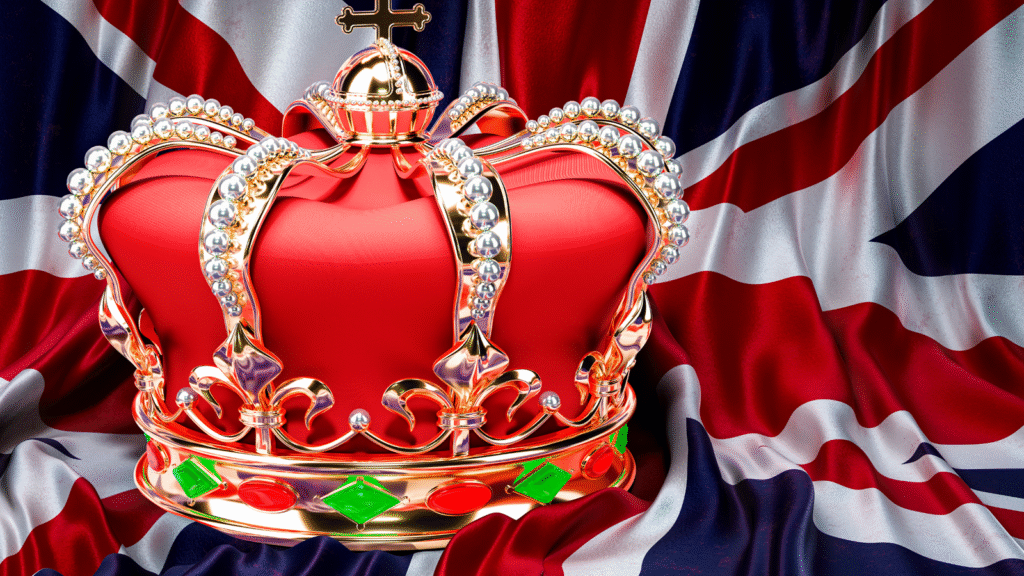The British monarchy is one of the oldest and most recognizable institutions in the world. Its story stretches across more than a thousand years, shaped by war, diplomacy, religion, culture, and the shifting balance of power between the Crown and the people. Although the monarchy today is largely symbolic, its past is filled with drama and transformation. Here’s a clear and engaging look at how the British monarchy evolved into what it is today.
Early Roots: Before England Was England
Long before a unified “England” existed, the island was home to several independent kingdoms. The early Anglo-Saxon period (5th–9th centuries) saw realms like Wessex, Mercia, and Northumbria competing for dominance.
A turning point came with Alfred the Great, King of Wessex, who defended his lands against Viking invasions and laid the foundations for a united English kingdom. His descendants continued this unification, gradually bringing most of the island under a single rule.
The Norman Conquest: 1066 and Its Legacy
In 1066, the English monarchy changed forever. William the Conqueror, Duke of Normandy, defeated King Harold II at the Battle of Hastings and established Norman rule.
The Normans brought:
-
a new aristocracy
-
centralized government
-
the feudal system
-
major cultural changes
This era solidified the power of the Crown and reshaped English society from the ground up.
Plantagenets: Growth, Conflict, and the Birth of Parliament
The Plantagenet dynasty (1154–1485) produced some of England’s most famous and infamous rulers, including Richard the Lionheart and King John.
In 1215, Magna Carta was signed—a document forced upon King John that limited royal power and protected certain rights. Although its impact at the time was limited, it became a cornerstone for the development of Parliament and constitutional government.
The Plantagenets also faced immense turmoil, including:
-
the Hundred Years’ War with France
-
the Black Death
-
internal struggles like the Wars of the Roses
These conflicts weakened royal authority and shifted power toward the nobility and Parliament.
The Tudors: Reformation and Renaissance
The Tudor dynasty (1485–1603) restored stability after decades of civil war. Its most famous monarchs, Henry VIII and Elizabeth I, transformed England culturally and religiously.
Henry VIII’s break with the Catholic Church created the Church of England, making the monarch its supreme head. This was one of the most significant political and religious shifts in European history.
Under Elizabeth I, England experienced:
-
the defeat of the Spanish Armada
-
the flourishing of the arts (Shakespeare, Marlowe)
-
the beginnings of overseas expansion
Her reign is often considered a golden age.
The Stuarts: Civil War and Constitutional Change
The Stuart period (1603–1714) saw tensions between the monarchy and Parliament reach a breaking point. Conflicts over royal power, taxation, and religion led to the English Civil War.
In 1649, King Charles I was executed—a shocking event that temporarily abolished the monarchy and established the Commonwealth under Oliver Cromwell.
The monarchy was restored in 1660, but the balance of power had changed forever.
The Glorious Revolution of 1688 replaced King James II with William III and Mary II and led to the Bill of Rights (1689), which limited royal authority and established Parliament as the central governing force of the country.
This cemented the idea of a constitutional monarchy.
Hanoverians to Windsors: The Modern Constitutional Monarchy
In 1714, the throne passed to the House of Hanover, whose early kings (George I and II) relied heavily on ministers—leading to the rise of the prime minister as the real executive power.
By the Victorian era, the monarchy had shifted into a symbolic institution. Queen Victoria (1837–1901) became a global figurehead during the height of the British Empire, but she had limited political influence.
In 1917, during World War I, King George V changed the dynasty’s name from “Saxe-Coburg and Gotha” to Windsor, due to anti-German sentiment.
The current royal family—Queen Elizabeth II until 2022, and now King Charles III—belongs to the House of Windsor.
The Monarchy Today
Today, the British monarchy is constitutional, meaning:
-
the monarch reigns but does not rule
-
political power rests with Parliament and the prime minister
-
the Crown’s role is symbolic, diplomatic, and cultural
The modern monarchy continues to attract global attention, combining centuries-old tradition with evolving public expectations.
Conclusion
The history of the British monarchy is a journey from fragmented kingdoms to a constitutional institution recognized worldwide. Once a powerful political force, the monarchy has adapted through conquest, civil war, religious transformation, and democratic evolution.
Whether admired or debated, it remains a central part of Britain’s identity and heritage — a living link to more than a thousand years of history.


